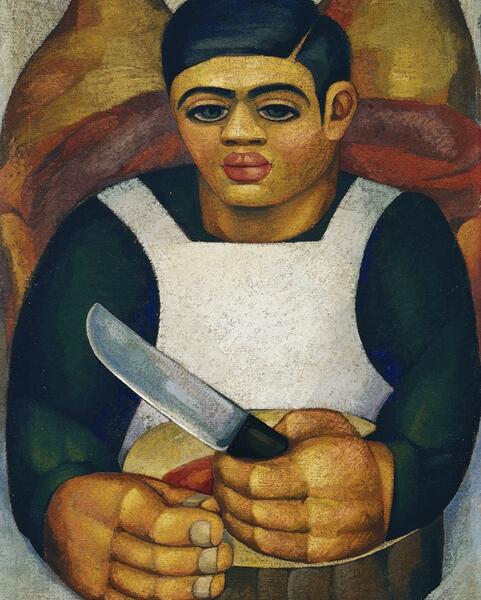Agustin Lazo. Cenizas Quedan, a Retrospective Look on the Initiator of Surrealism in Mexico
Agustin Lazo.Cenizas quedan,(Ashes are left behind) a retrospective exposition of the Mexican painter Agustin Lazo (1896-1971), will be on display until April 23, as part of the temporary expositions of the Blaisten Collection of the University Cultural Center Tlatelolco.

The retrospective gallery united a hundred works by the painter, who was the greatest representative in Mexico of the European school in Mexican paintings between 1930 and 1949. Critics consider him the pioneer of surrealism in Mexico, as well as stage designer and playwright.
The curator James Oles invested six years of investigation and six months to attract the public’s attention to an artist that rejected “muralismo”, as well as didactic and political art. Instead, as the press release stated, “because of the surrealism of his paintings and engravings, he has been compared to the Italian painter Giorgio De Chirico”.
According to Oles, Agustin Lazo “is widely recognized by art historians, but the general public is not very familiar with him”. Hence, the expositions mission to turn attention to his works.
The title of the exposition alludes to the Mexican saying that can be translated as “where there was fire, ashes are left behind”, because many of his letters and personal objects were destroyed of lost. “it’s hard to reconstruct the life of a discreet man, but where there was fire, ashes are left behind, and from these ashes we will get history”, said James Oles.
Cenizas Quedan includes works from 1917, from the time when Lazo was a student, to some paintings from the 40s. Since Lazo was part of the group of “Los Contemporáneos” (The Contemporaries) and created the scenery for plays directed by Celestino Gorostiza, and wrote some dramas, the gallery includes about 30 of the drawings he made for scenes and costumes for the experimental theater companies Teatro Ulises and Teatro Orientacion, which modernized theater in Mexico.
According to the curator, the majority of the paintings are small because, like Luis Cardoza y Aragón in a text from the 1940s said, Lazo “wasn’t interested in size or sweat”, referring to the size of murals and the work that climbing the scaffold required.
“Lazo is one of the few painters of his generation that never climbed a scaffold, and never worked on a mural, not even as an assistant. Even Julio Castellanos, María Izquierdo, Rufino Tamayo, and Frida Kahlo, were interested in doing a mural, but he was never interested by big scale Works”, Oles explained.
The biggest paintings that are being exhibited are two 1.5 meters long boards with to the theme of music that were done for the Spanish embassy in 1924.
A very important aspect is his use of collages. About 10 of these pieces, which he did in the mid-30s, will be on display. “He used old illustrated magazines from the late XIX century, like Illustrated World. He cut out the illustrations and rearranged them. He rewrote them in very surrealist and interesting scenes.”
There are also some portraits of his mother, of Xavier Villaurrutia and of men of written words. In the same way, the exposition exhibits photographs from the time period, from the archives of Laszo, as well as a selection of books illustrated by him.
According to Oles, like in the case of poetry by Villaurrutia, the painted works of Lazo have a dream like quality, full of open metaphors.
On the other hand, the painted was part of a group of homosexual artists like Salvador Novo and Xavier Villaurrutia, which shows the diversity of the group. “Lazo-says Oles- helps us understand that the world of art in Mexico in the 20s and 30 was more diverse than we imagine. There were different ways of living, different life styles, different ways of thinking about Mexican art, even though only some proposals and figures achieved recognition”.
The Blaisten Collection counts with four important works, and the Modern Art Museum and MUNAL with one.
This way, the retrospective made it necessary to turn to almost fifty collections, particular and institutional, like the National Bank of Mexico, The Secretary of Public Housing and Credit, the collections of Carlos Monsiváis and the Mexican Art Gallery.
The specialists explained that the last Lazo exposition happened in 1982, and that until now his work had never been seen in its totality in one single place. Also, a book about this artist had not been written since 1988. Along with the exposition, there will be a bilingual, English-Spanish catalog, with more than 80 images and texts from Villaurrutia.



